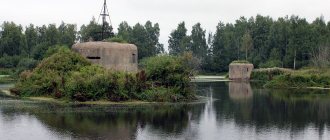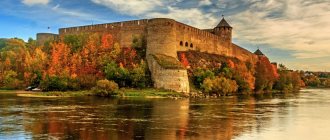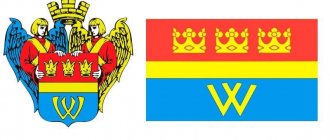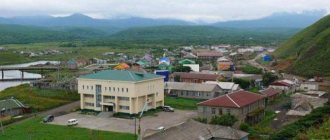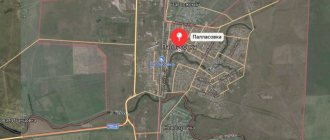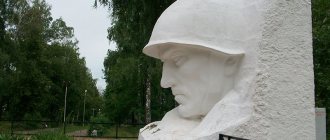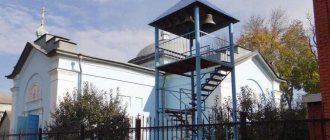District in Leningrad Oblast, Russia
| Tosnensky district Tosnensky district | |
| District | |
| Flag Coat of arms | |
| Location of Tosnensky district of Leningrad region | |
| Coordinates: 59°33′N 30°54'E / 59.550°N W. 30.900 ° E. / 59.550; 30.900Coordinates: 59°33′N 30°54'E / 59.550°N W. 30.900 ° E. / 59.550; 30.900 | |
| A country | Russia |
| Federal subject | Leningrad region[1] |
| Established | August 19, 1930[2] |
| Administrative center | Tosno[1] |
| Square [3] | |
| • General | 3,585.4 km2 (1,384.3 sq mi) |
| population (2010 Census)[4] | |
| • General | 83,898 |
| • Evaluate (2018)[5] | 129,761 (+54.7%) |
| • Density | 23/km2 (61/sq mi) |
| • Urban | 59.3% |
| • Rustic | 40.7% |
| Administrative structure | |
| • administrative districts | 6 settlement municipality |
| • Settlements[1] | 3 Cities/towns, 4 Urban settlements[6], 108 Rural areas |
| Municipal structure | |
| • Municipal status as | Tosnensky municipal district[7] |
| • Municipalities[7] | 7 urban settlements, 6 rural settlements |
| Timezone | UTC + 3 (MSK [8]) |
| OKTMO I WOULD | 41648000 |
| Web site | https://tosno-online.com/ |
Tosnensky district
(Russian: Tosnensky rayon) is an administrative[1] and municipal[7] okrug (district), one of seventeen in Leningrad Oblast, Russia. It is located in the central southwestern part of the region and borders the Kirovsky district in the north, Kirishsky district in the east, Chudovsky district of the Novgorod region in the southeast, Novgorod district of the Novgorod region in the south, Luga district in the southwest, Gatchina district in the west and the Pushkinsky and Kolpinsky districts of the federal city of St. Petersburg in the northwest. The county's area is 3,585.4 square kilometers (1,384.3 sq mi).[3] Its administrative center is the town of Tosno.[1] Population (excluding administrative center): 83,898 (2010 Census);[4] 77,194 (2002 Census);[9]78,500 (1989 Census).[10]
Story
It was formed on August 19, 1930.
Then the Tosnensky district included 15 village councils, the village of Ulyanovka and the city of Lyuban. Subsequently, the territory of the district was repeatedly changed, village councils were added, and those already included were transformed. In 1996 it received the status of a municipal entity. In 2006 it was finally formed in its modern form.
Population and administrative structure
The population of the Tosnensky district is 129.6 thousand people. The maximum was recorded in 2015 – 131.8 thousand. However, since 2006 the area has added about 20 thousand population, so the dynamics are generally positive. This can be explained by the proximity to St. Petersburg; many people move here to live because real estate is cheaper here. According to official statistics, more than twenty thousand residents of the Tosnensky district work in St. Petersburg.
It is also worth noting the presence of gardening, due to which the population of the area increases significantly in the summer. The national composition is dominated by Russians.
Consists of five rural and eight urban settlements. They include 115 settlements, 15 have a population of more than 1,000 people, and 41 have a population of more than a hundred. This is quite a significant figure; in some areas of the Leningrad region, more than a hundred people live in 15-20 settlements.
Table. Rural settlements of the Tosnensky district.
| Name | Center | Population | Settlements included |
| Lisinskoe | Village Lisino-Korpus | 2060 | 17 |
| Nurminskoe | Village Nurma | 3300 | 3 |
| Telmanovskoe | Telman village | 14160 | 4 |
| Trubnikoborskoe | Trubnikov Bor village | 1630 | 16 |
| Shapkinskoe | Shapki village | 530 | 6 |
Table. Urban settlements of the Tosnensky district.
| Name | Center | Population | Settlements included |
| Krasnoborskoe | Urban settlement Krasny Bor | 5280 | 4 |
| Lyubanskoe | City of Lyuban | 9800 | 26 |
| Nikolskoye | Nikolskoye town | 22700 | 4 |
| Ryabovskoe | Urban settlement Ryabovo | 3320 | 1 |
| Tosnenskoye | City of Tosno | 43680 | 19 |
| Ulyanovskoe | Urban settlement Ulyanovka | 12650 | 1 |
| Fedorovskoe | Urban settlement Fedorovskoye | 3950 | 4 |
| Fornosovskoe | Urban settlement Fornosovo | 6600 | 10 |
Geography, relief and climate
The area of the Tosnensky district is 3585 square kilometers. It borders with the Novgorod region, St. Petersburg, as well as with the Luga, Gatchina, Kirishi and Kirov districts of the Leningrad region.
The relief of the Tosnensky district is predominantly flat, although in some places there are hills and elevated terrain. Most of the territory (80%) is covered with forest, and there are swamps. There are practically no lakes, the largest is Pendikovskoye. Of the large rivers, only Tosna is worth mentioning. In general, the Tosnensky district is not rich in water resources.
The climate is temperate continental, characterized by cool summers and mild winters. The average annual precipitation is 700 millimeters. The weather in general is no different from the Leningrad region as a whole. Air masses from the Atlantic Ocean have a great influence, thanks to which winters are often very warm, especially in recent years, when weather anomalies are regularly observed.
Geography
The northern part of the district is highly urbanized and consists mainly of the suburbs of St. Petersburg, while the southern part is swampy and sparsely populated. The entire territory of the district belongs to the drainage basin of the Neva River. Rivers in the north and west of the region flow into the left tributaries of the Neva, of which the Tosna and Izhora are the main ones. Rivers in the south and east of the region flow into Tigoda and Kerest, left tributaries of the Volkhov River. Tigoda crosses the southeastern part of the district, and a small section of Kerest constitutes the border between the district and the Novgorod region.
Economics and transport
The economic center of the Tosnensky district is the city of Tosno, and the overall economy is characterized by an emphasis on industry. The spheres of production of building materials, woodworking, extraction and processing of peat are developed. In agriculture, the emphasis is on vegetable growing (the district is a leader in the Leningrad region, growing more than 50% of vegetables).
More than 450 small enterprises and more than 1,700 individual entrepreneurs are registered in the Tosnensky district. Most of them are retail or service industries.
A railway line runs through the Tosnensky district, and the M-10 St. Petersburg - Moscow highway passes through the district. The ring road runs 15 kilometers from the northern border of the district.
FOUNDATION OF THE DISTRICT
The initial mention of these lands took place in 1500, due to its close location to the regional city of St. Petersburg. All trade routes and the “Russia” highway still ran through these lands.
In 1707, the Yam-Tosna station was developed, and by the 19th century it had transformed into a large village and connected itself with the repair of the route from St. Petersburg to Moscow. The organization of the postal route running through the village of Lyuban took place on January 2, 1711.
The village of Nikolskoye was organized on the banks of the Tosna River in 1712. And Peter I sent craftsmen from Moscow and the Moscow region there to extract limestone, brick, and timber. The main village at the exit from St. Petersburg to Moscow was Yam-Izhora. Peasant people lived in the village and after 1869 they began to make matches, trade and establish land.
In the spring of 1843, construction of the railway line began, and by the end of 1849 the first train with passengers passed through the Lyuban station.
The growth of the inhabitants of Tosno increased after the start of lime mining and the opening of the brick and wood processing industries. And by 1912, railway lines were opened in the Tosno-Shapki and Tosno-Baltiyskaya directions.
The Tosnensky region became an independent center in 1930 in connection with the order of the Presidium of the Leningrad Oblast Executive Committee, confirmed by the Presidium of the All-Russian Central Executive Committee.
In the directory of 1930, the area is listed as large-scale, based on railway lines, with rafting rivers and developed agricultural activities.
Now its area is 3600 km, and the number of inhabitants is over 100 thousand. It consists of three towns - Tosno, Lyuban and Nikolskoye and more than 100 villages and towns.
Attractions
In the Tosnensky district there are attractions and interesting places that attract different tourists. Among the most significant, it is worth mentioning first of all the Sablinsky caves and waterfall. The caves are of artificial origin, about five kilometers long and are quite an interesting object.
Also worth mentioning in the list are the following attractions and interesting places in the Tosnensky district:
- Maryino Estate;
- Tosnensky Museum of Local Lore;
- Novolisino Estate;
- Art gallery in the city of Tosno.
These are places worth visiting. Please note that in transit you can only visit those attractions that are located in the city of Tosno (if you are traveling along the M-10). To visit the rest you need to set aside separate time.
Culture and recreation
Maryino Estate
In the area there are twenty-two cultural heritage monuments of federal significance and an additional eighty-one objects classified as cultural and historical heritage of local significance.[17] Among the monuments of federal significance are the Stroganov Maryino estate, now located in the village of Andrianovo, and the Forest School ensemble in the village. Lisino-Korpus.
The only state museum in the area is the Tosnensky District Museum, located in the city of Tosno.[18]
Recreation and fishing
In the Tosnensky district there are interesting places that are visited by many tourists. This is largely facilitated by the proximity to St. Petersburg. Many places can be reached easily and quickly, even by public transport. However, it is worth noting that the tourist infrastructure in the area is poorly developed, so most come for one day.
There are also few campers with tents in the Tosnensky district; objectively speaking, there are no good places for this. This is largely due to the lack of bodies of water; as we wrote above, there are very few lakes here and most are very small. Therefore, from the point of view of fishing, the area is one of the worst in the Leningrad region. It’s definitely not worth going fishing to the Tosnensky district.
Tosnensky district is located in the south of the Leningrad region. In the north, the district borders with St. Petersburg, in the south - with the Novgorod region, in the northeast - with the Kirovsky district, in the west - with the Gatchina district, in the southwest - with the Luga district. There are 13 municipalities6, 7 urban and 6 rural settlements in the region. The district includes three cities - Tosno , Lyuban , Nikolskoye and more than 100 towns, villages and hamlets. The administrative center of the district is the city of Tosno .
Tosnensky district is one of the large districts of the Leningrad region. The area of the district is 3585.4 square meters. km. The population of the district in 2010 was 122,999 people.
The Tosno land was first mentioned in the Novgorod census salary book of 1500. Since the 18th century, the historical fate of the Tosno region was determined by its proximity to St. Petersburg. Since then, all trade routes from St. Petersburg to Moscow pass through Tosno, including the Rossiya highway and the Oktyabrskaya Railway.
In 1712, the settlement of Nikolskoye was founded on the right bank of the Tosna . Here, by decree of Peter I, Russians were resettled from Moscow and other provinces as artisans, who began developing rubble slabs, lime, brick, timber and alloying building materials along the Tosna to the Neva.
The first on the postal route when leaving St. Petersburg to Moscow through Srednyaya Rogatka and Sofia (Tsarskoe Selo) was the village of Yam-Izhora. Until 1869, the peasants living there, according to the right of coachmen, were not subject to the recruitment queue, did not pay taxes and received funds from the driver's duty. Later they were engaged in farming, producing matches, small trade and light transportation to railway stations.
Gradually, holiday villages with a rich history associated with the railway begin to develop near the railway. the names of outstanding writers, artists, poets, statesmen who once made the glory of Russia and lived here in their ancestral nests. These unique natural reserves and architectural monuments of the great masters of Russian architecture, and today occupy a special place in the Tosnensky district .
As an independent administrative unit with a center in the village of Tosno, the Tosnensky district was formed in 1930 by a resolution of the Presidium of the Leningrad Oblast Executive Committee, approved by the Presidium of the All-Russian Central Executive Committee.
On February 1, 1963, the city of Tosno was classified as a city of regional subordination.
Today, Tosnensky district is one of the leaders in the Leningrad region in terms of industrial production, vegetable yields, and construction of social facilities. Tosnensky district is the largest agricultural producer in the Leningrad region. The main industries are vegetable growing, dairy farming and pig farming.
The following roads pass through the area: M10 ( E 105 ) “Russia” (St. Petersburg - Moscow), P41 Luga - Pavlovo
The Tosno land is rich in cultural and historical monuments.
In 1967, a railway temple . The church was built at the request of the Chief Manager of Communications and Public Buildings P.P. Melnikov in memory of the builders of Russia's first double-track highway St. Petersburg-Moscow, the names of 72 of them are immortalized on a marble plaque inside the church. An unforgettable event in the parish of the church in 1894 was the 40-minute stop at the Lyuban station of the funeral train with the body of Emperor Alexander III , accompanied by Fr. John of Kronstadt.
The Maryino estate is a masterpiece of architectural architecture of the 18th–19th centuries. To this day, the palace building and an excellent landscape park have been preserved here.
Lisino-Korpus is a village that has been an imperial hunting ground since 1846. The estate complex, built according to the design of N. L. Benois, includes a hunting lodge, a church, a park, and the building of the first forestry technical school in Russia. The Lisinsky educational forestry, created in 1834, became the best forestry laboratory in Russia.
Temple of the Holy Martyr Tsarevich Alexy in the village. Ulyanovka
Existing Specially Protected Natural Areas
Glebovskoe swamp . Regional hydrological reserve. Gatchina, Luga and Tosnensky districts, between the settlements of Porozhek, Dubovik and Konechki.
Lisinsky . Regional complex reserve. Tosnensky district, vicinity of the village. Lisino-Korpus
Sablinsky . Complex natural monument. Tosnensky district, northern outskirts of the village. Ulyanovka
Projected and proposed protected areas, as well as other objects of nature-oriented tourism
Verigovschina . Regional zoological reserve. Tosnensky district, east of the village of Lyuban. Supposed to be organized for the purpose of protecting floodplain meadows along the river. Tigoda and rare species of birds: black stork, golden eagle, meadow and hen harrier, great snipe, gray crane.
Pomerania . Botanical natural monument. Tosnensky district, vicinity of the railway station. Pomerania. Intended to be organized for the purpose of protecting meadow areas with meadow plant species.
Fedorovskoe . Tosnensky district, river valley Izhora, near the village. Fedorovskoe
The deep canyons of the Sablinka and Tosny rivers , the uniquely beautiful Sablinsky caves, the largest waterfalls in the Leningrad region, beautiful deposits of limestone and sandstone, as well as the picturesque hills on which the ancient Russian village of Shapki is located have long become favorite places for tourists.
View a list of historical and cultural attractions in the area.
Museums in the area
1991 - On March 1, a decision was made by the Ministry of Culture of the Russian Federation to create the Tosno Museum of History and Local Lore . Tosno, Lenin Ave., 47-a
The museum was founded in 1993. The museum building was built in the 19th century. - the house of the royal nurse Ustinova-Smolina, later the revolutionary council was located here. Restored and opened on June 12, 2000. The history of the Tosnensky district is presented here (all interesting objects). Also presented is the corner of Numerov B.V. - Russian astronomer, founder of the Astronomical Institute. The opening of a crafts hall is planned.
10.00-18.00, days off: Monday, Sunday. Tel. 21-769, 25-956,
Sablinsky Museum of History and Local Lore , Tosnensky district, village. Ulyanovka, Volodarsky Ave., 70., Opened on the premises of Ulyanovsk School No. 1.
Museum of Nature and History of Russian Forestry , Tosnensky district, Lisino-Korpus village. Works at the Forestry College building. The Lisinsky forestry itself was created in 1834.
Museum of Military Glory , Tosnensky district, Nurma village. School Museum. The exhibition is dedicated to the feat of the Tosno division.
Hunters and fishermen's bases
Hunting farm "Fauna"
Tosnensky district, Ivanovskaya village, lake. Toilug
3-23-86
Hunting and fishing base "Pendikovo" Leningrad Society of Hunters and Fishers
Tosnensky district, lake Pendikovskoye, Nurma village
MOO Leningrad Society of Hunters and Fishers, St. Petersburg, emb. R. Buckles, 32.Only for hunters.
Official website of the district administration: www.tosno-online.com
